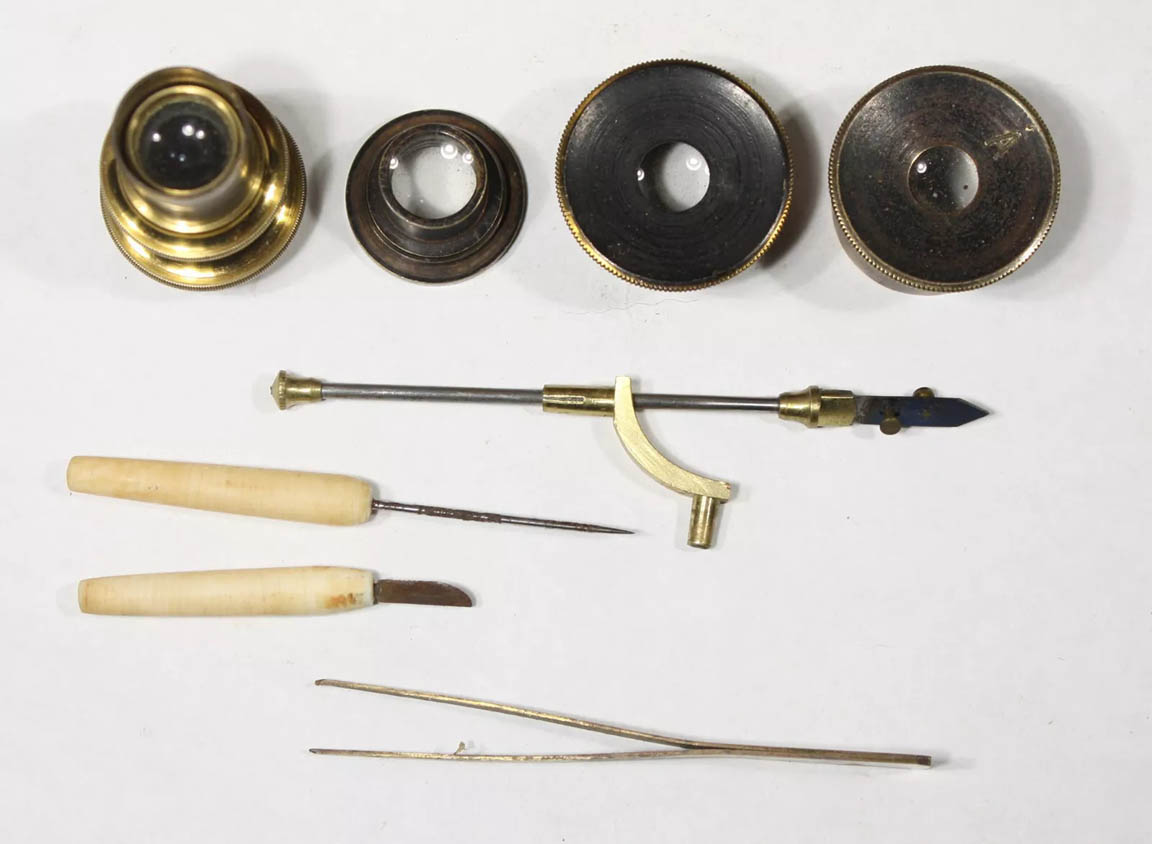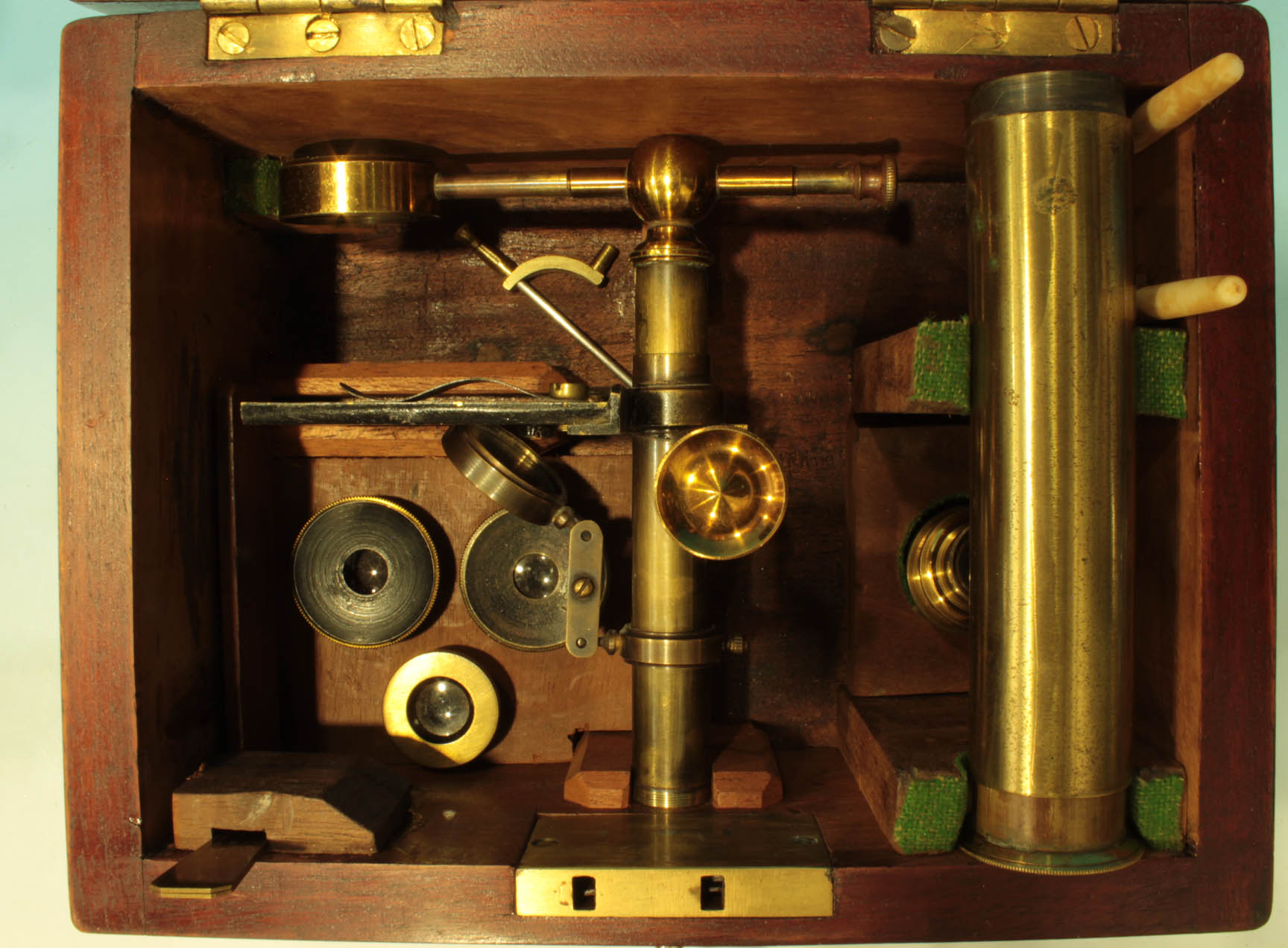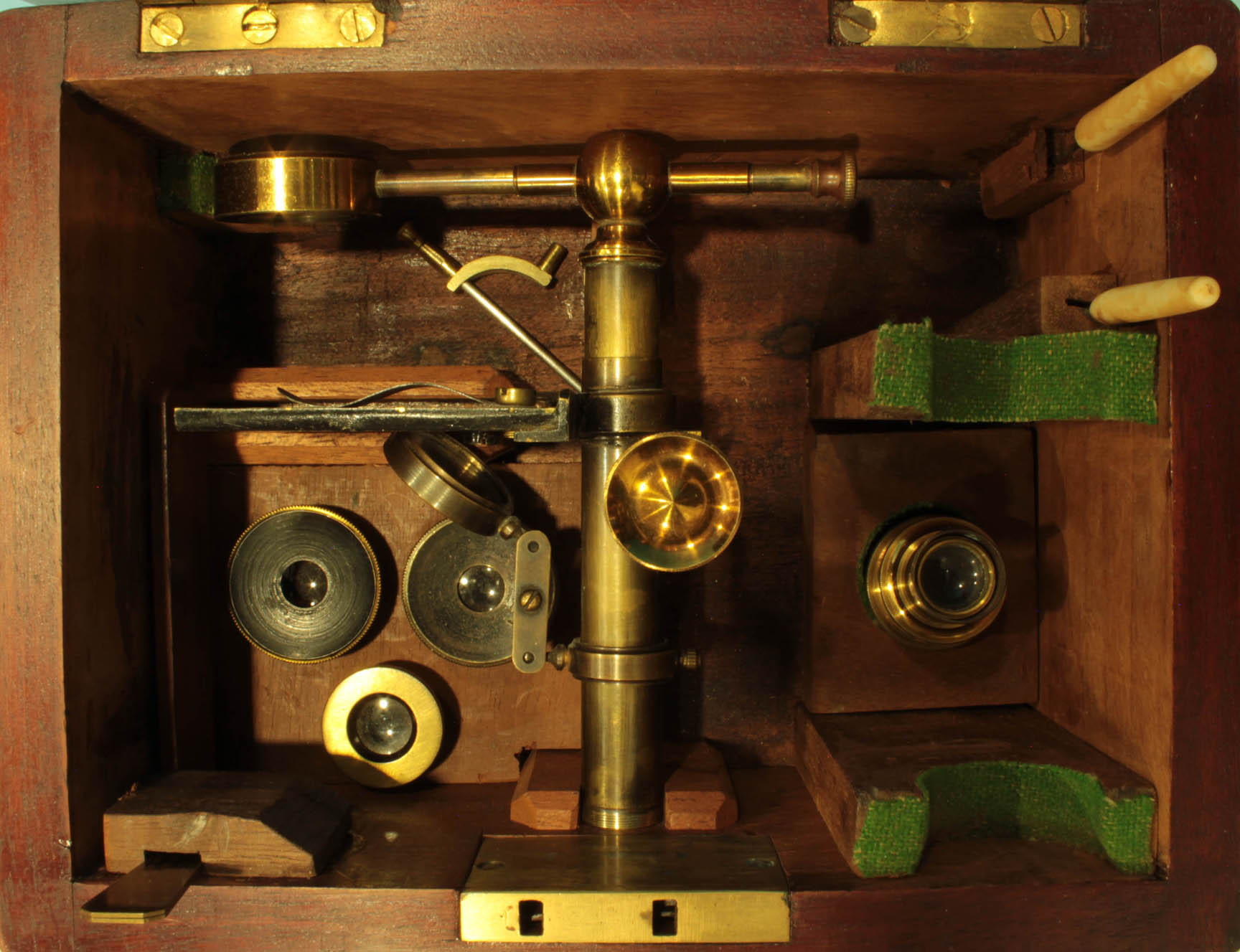MAKER:JOHN D. POTTER
c. 1860s
Authors: Barry Sobel & Brian Stevenson
Editor:Joseph Zeligs
Please Click On Any Picture for a Larger Version
DESCRIPTION:
This is an unusual combined simple and compound case-mounting microscope. The arm that holds the optics is unique in that it is cylindrical and held firmly by pressure, so that the arm can be drawn back-and-forth and also rotated. Additionally, the arm can pivot on the upright, giving full aquatic
movement. The support is much more firm than you would think. The compound tube is rather short and does not weigh down the arm at all. The friction on the arm is quite firm.The ring has threads for the compound tube on top and for the non-RMS objective on the bottom. The fittings in the case take all, so if not designed this way I would not expect that. Taking all this into account, I think this all original, albeit unusual!
Focusing is by straight-toothed rack and pinion. The substage mirror is articulated. The stage aperture has a recess to accept a glass or opaque insert (none present), or to support a watch-glass for specimens in liquid. There is no provision for adjusting the aperture of the stage. The trade card of Potter is pasted to the inside surface of the lid over a piece of felt to protect it and the instrument itself from the ends of the brass screws that protrude slightly inside the lid. The instrument itself is otherwise unsigned. There is a nicely engraved plate on the outer top surface of the lid with the former owner's name H. F. Harrison, Esq.
. In England, the term Esq.
, standing for esquire, implied Harrison was a gentleman of some degree of nobility but below the rank of a knight.
ACCESSORIES:

Include one compound microscope eyepiece and one low power compound microscope objective with non-RMS threads. This compound objective may have originally been a divisible type but if so, the outer element is lacking. There are three different power simple microscope eyepieces. The lowest power one drops inside the ring on the end of the arm and has a lacquered brass finish on top. The other two, of larger diameter, fit inside the barrel of the the ring with a firm grip with their black tops protruding on top. None are labeled. Other accessories include bone or ivory short-handled scalpel and dissecting needle, brass tweezers, and a stage forceps that mounts on either side of the stage in holes that are revealed after rotating the stage clips to the side.
CASE AND FITTINGS:


The beautifully finished hardwood case measures about 7 1/2(L) x 6(W) x 5 inches(H). It has hand-made dovetail construction for the sides of both the lid and the main part of the case, with brass screws holding some of the inner fittings in place and also serving to fasten the top of the lid to its sides. Inside the fitted case the contact points are covered with green felt. There are fittings that hold the dissecting instruments and for all the lenses. The only part that seems not to have a dedicated fitting is the stage forceps. There is no stage insert.
CONDITION:
Overall, this outfit is in exceptionally fine cosmetic, mechanical, and optical condition with some small lacquer losses to the compound tube and minor losses to the Trade card. The lock and key work well. The objective is lacking a can.
HISTORY OF J.D. POTTER MICROSCOPES

(This information kindly supplied by Dr Brian Stevenson)John Dennet Potter (1810-1882), succeeded Robert B. Bate(1782-1847). Potter's Trade Card includes images of many different scientific instruments, including a Jones Most Improved type of compound microscope. Although following Bate's death his widow initially owned the business, it was sold to Potter in 1850. Potter was, as was Bate before him, an optician to the Admiralty and he had the sole rights to the Sykes Hydrometer for testing alcohol content of beverages as well as having rights to selling nautical charts. Relatively few Potter microscopes are well known, other instruments by him being more common. As can be seen in the Potter Trade Card shown to the left, Potter sold many instruments, and only one microscope (a Jones-Most-Improved type) is pictured, and takes up a relatively small portion of the space on this card, also implying microscopes were not a major part of his business. For further details about Potter and Bate, please see the detailed discussion on Brian Stevenson's website, Historical Makers of Microscopes and Microscope Slides.
OTHER COMBINED SIMPLE AND COMPOUND MICROSCOPES:
Outfits using the same stand to support either a simple or compound microscope were made by other makers around the same time period. Examples on this web site include those made by Parkes & Son and Field & Son. The latter also included equipment for slide making. Pritchard microscopes sometimes had an arm attached in its middle to the top of the limb, that on one end accepted the compound tube and on the other end accepted a single
lens. An example of this is the Pritchard Standard Achromatic Engiscope
of about 1840, on this website.



